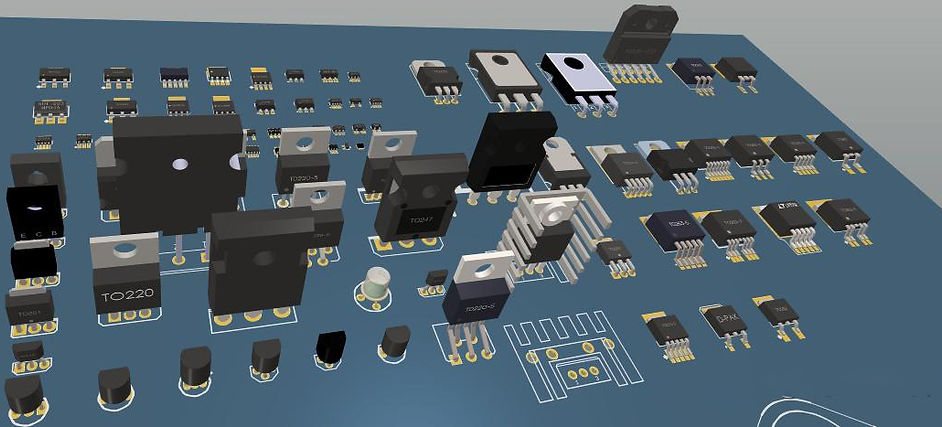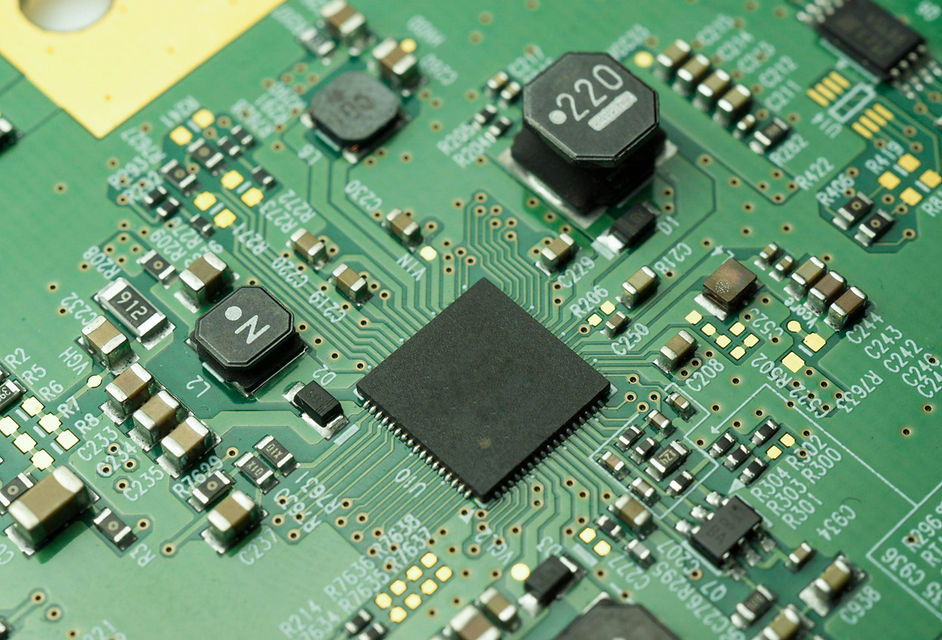
Triode
Description:
A triode for PCB (Printed Circuit Board) refers to a type of vacuum tube that is designed to be mounted on a printed circuit board. These triodes are commonly used in audio and radio frequency circuits where vacuum tube amplification is preferred over solid-state amplification.
Triodes for PCBs are typically small in size and designed to operate at low voltages and currents. They have three pins or leads that are used to connect them to a PCB, with the cathode being connected to ground, the anode to the power supply, and the control grid to the signal input.
Triodes for PCBs can be used in various applications, such as in preamplifiers, power amplifiers, and guitar amplifiers. They offer a unique and often desirable sound quality that is different from solid-state amplification, with characteristics such as warm tone, high gain, and natural compression.

Advantages:
-
Amplification: Triodes are commonly used as amplifiers in PCBs. They can amplify weak signals and increase their strength, allowing for clearer and more accurate transmission of information.
-
High impedance: Triodes have a high input impedance, which means they do not draw a significant amount of current from the circuit they are connected to. This is useful in applications where low current draw is important.
-
Linear response: Triodes have a linear response, which means they can accurately reproduce the input signal without distortion. This is important in applications where a faithful reproduction of the input signal is necessary.
-
High voltage handling: Triodes can handle high voltages, which makes them useful in applications where high voltage levels are present.
-
Low noise: Triodes have low noise levels, which means they do not add unwanted noise to the circuit they are connected to. This is important in applications where noise can interfere with the signal being transmitted.

Factors Choosing the Right Diode:
-
Operating voltage: The triode must be able to handle the voltage levels present in the circuit. The maximum plate voltage rating of the triode should be higher than the maximum voltage in the circuit.
-
Operating current: The triode must be able to handle the current levels present in the circuit. The maximum plate current rating of the triode should be higher than the maximum current in the circuit.
-
Amplification factor: The amplification factor of the triode determines how much the signal will be amplified. The appropriate amplification factor will depend on the specific application.
-
Gain bandwidth product: The gain bandwidth product of the triode determines the frequency range over which it can amplify signals. A triode with a higher gain bandwidth product will be able to amplify higher frequency signals.
-
Size and shape: The physical size and shape of the triode should be considered when designing the PCB layout to ensure that it fits within the available space.
-
Heat dissipation: The triode may generate heat during operation, so adequate heat dissipation should be provided to prevent overheating.

Application:
-
Audio amplification: Triodes can be used as audio amplifiers in PCBs, providing a high-quality, linear amplification of audio signals with low distortion.
-
Radio frequency amplification: Triodes can be used as radio frequency (RF) amplifiers in PCBs, providing amplification of RF signals with high gain and low noise.
-
Oscillators: Triodes can be used in oscillator circuits in PCBs, providing stable, predictable frequency oscillations for use in various applications such as timing circuits or signal generators.
-
Switching: Triodes can be used as switches in PCBs, allowing a circuit to be turned on or off by controlling the voltage applied to the grid of the triode.
-
Voltage regulation: Triodes can be used in voltage regulation circuits in PCBs, providing stable and predictable voltage levels in the circuit.
-
Power amplification: Triodes can be used as power amplifiers in PCBs, providing high power amplification of signals for use in applications such as power supplies or motor control.

Procurement Process:
-
Identify the required specifications: The first step is to identify the required specifications of the triode based on the needs of the PCB design. This includes parameters such as operating voltage, current, amplification factor, gain bandwidth product, and physical dimensions.
-
Quotation: Once a requirement is confirmed, a quote should be made for customers, including the price, lead time, minimum order quantity, and shipping costs.
-
Production.
-
Quality control.
-
Packing and delivery.

Advantages of Ronghua:
-
Strong product supply capacity, all quantities are available here.
-
Reliable product quality, with ISO9001, ISO14001, CQC, IATF, UL approvals.
-
Customized products, workable for all brands such as TOSHIB, UTC, HOSONIC, TEAPO, BM, MURATA, TPSEMI, CHILISIN, LITEON, SEOUL SEMICONDUCTOR, MARCHING POWER, etc.
-
Fast delivery, sample available, Ronghua provides one-stop services to meet different needs.
-
Favorable price, working with factories directly, Ronghua just provides factory prices.
-
Flexible response, solving problems quickly without delay, we know your concern and we can handle it flexibly.
-
Rich experience, complete management, and quality control system.
-
Professional global trade team for your services from pre-sales to after-sales.
-
Grateful heart, all Ronghua people are working with a grateful heart, and making customers feel our gratitude.











